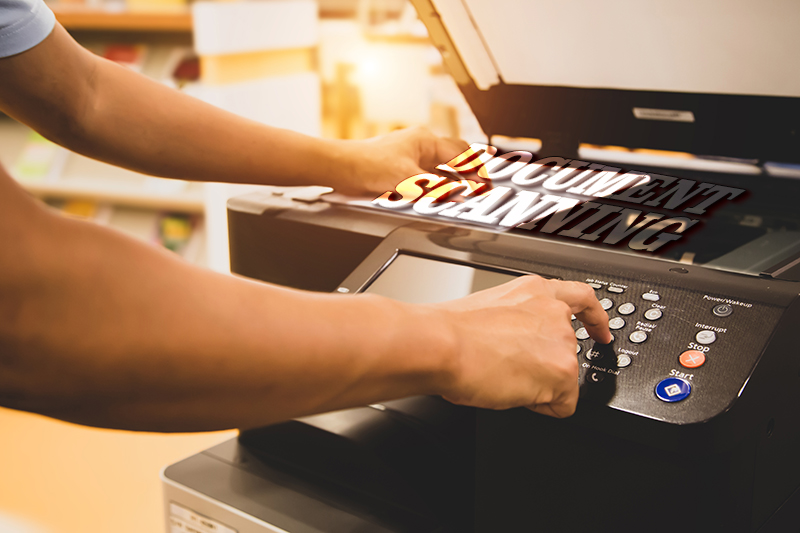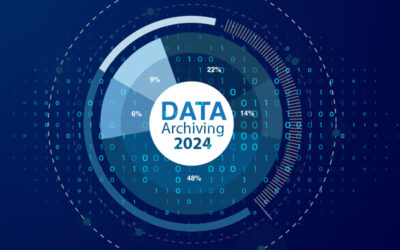Bankers Boxes are useful for document storage, but their days as case-file organizers are coming to an end as the world moves to digital. A bankers box refers to archive boxes that can store around 2500 pages. The process of scanning these huge volumes of documents can be difficult and confusing to handle on your own. Document scanning services provide the solution, reducing the up-front cost of scanning and allowing companies to focus on what they do best. Scanning records cuts down on paper-related costs, improves efficiency, and reduces security risks.
Banker’s boxes are sturdy cardboard boxes that can hold a very large volume of paperwork, and allow for stacking them neatly on top of one another for compact storage.
However, storing items in banker’s boxes can be problematic for a number of reasons.
- It is very difficult to retrieve information from stored files without first removing them from the box and then replacing them after use. It can cause problems with active records that require more frequent access.
- It is easy to lose track of which boxes contain what information, making it difficult to locate the right box when it is needed.
- Paper records are also susceptible to damage caused by fire, water, or other natural disasters.
- Paper documents can take up valuable office space.
This is why scanning records in banker’s boxes it important. But before you proceed, it is important to consider the factors that can impact document scanning.
Factors that can Impact Document Scanning
- Quantity of paper: A standard banker’s box can hold about 2,500 sheets of paper. If you have 50 boxes, multiply 2500 by 50 to find out the number of pages that need to be scanned (2500 X 50 = 125,000 pages). Keep in mind that bulk scanning is usually competitively priced).
- Single sided or double sided: While the number of papers that fit into a banker’s box is 2500, make sure to check whether the pages are double sided or not. Using both sides of a piece of paper doubles its usability but increases the number of pages that needs to be scanned. For example, a box of 2500 double-sided pages is counted as 5000 pages.
- Prepping the documents: Removing pages from binders, removing staples and other fasteners, folding down corners, and ironing wrinkled sheets are all a part of document preparation for scanning. If your paper document collection is exceptionally chaotic or untidy, the extent of preparation necessary will be higher.
- Size of the documents: Documents up to 11×17″ can be scanned using standard high-speed scanners. Oversized scanning is required for documents larger than that (such as architectural drawings, blueprints, or maps). So knowing the size of the documents is essential.
- Required index field: Labeling and indexing is important for documents scanning. The most cost-effective method of indexing a box of documents is to name them after the contents of the box (names, years, etc.) and search them up digitally as if they were in the box. You can also opt for OCR scanning, which may cost more but will allow you to search for files using keywords.
- Meeting scanning accuracy compliance requirements: The industry average for imaging accuracy is 99 percent. This means that one out of every 100 pages has an error. Customers with industry-specific compliance rules may want up to 99.99 percent accuracy, which necessitates additional quality control and manual oversight, raising the project’s cost.
- Onsite or offsite scanning facility: You have the option of getting the scanning done on-site at your location or having your documents scanned at a secure off-site facility. Most document scanning companies conduct scanning projects in a secure facility.
- Scanning and conversion into various formats: Decide whether you want each section of documents scanned into folders, or as documents in PDF format. If a folder contains ten papers, they can all be scanned into a single PDF at once. If each of these documents must be converted into PDF, this will take more time and cost more money.
Organize your Files for Better Management
Bankers boxes are a great way to store your documents, but the problem is that if you need to view or retrieve documents from one of these boxes, you have to move a lot of boxes in order to find the right one. Moreover, there is bound to be something lost during transitions between different departments or even within departments. The best way to manage your documents is to scan them. A reliable document scanning company can also help you organize your files for better management which will save you time and money in the long run.




